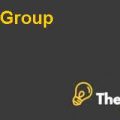Himalaya Soap’s Case Study Solution
Evaluation of Himalaya Soap’s Launch Strategy
The current growth strategy used by Himalaya Drug Company for launching Himalaya Herbal Soapis more of ‘Product Development’. As per Ansoff’s matrix displayed in appendix 1 (Stimpson, 2010), this type of strategy focuses on the development of new products for the existing markets. However, a product development strategy should be adopted when the product line is being extended or when improvements are being made to the current product. This is a strategy which is more orientated for a situation when growth is focused on developing new products for the same market that the company is competing in rather than for a situation that Himalaya Drug Company faces for its new herbal soap.
In the case of Himalaya Herbal Soap, the current market is highly saturated and a Product Development Strategy would saturate it further. By introducing an herbal soap which has four categories in terms of offering different ingredients in each of the four different types of soap, Himalaya Soap is basically giving four different options to its current market in terms of choosing their herbal soap based on four distinct ingredients.However, this does not seems to be the most appropriate growth strategy for a saturated market.
A better strategy for Himalaya Soap would have been ‘Market Development’ (Stimpson, 2010) where the focus is on selling the same product in different markets. This could mean geographic expansion for Himalaya Soap as well as targeting new segments in the market to minimize the stagnation of a saturated market.
The launch marketing efforts do not compliment the product image at the moment. The price of the product is currently in the high premium segment whereas its advertisement shows the product’s ability to provide freshness and beauty to a consumer in the lower price segment. In addition to this, the current distribution has been done through a network of medical representatives whereas the brand image conveyed through media does not exactly focus on the soap’s uniqueness as a natural soap with Ayurvedic capabilities. There is a very obvious flaw in positioning in terms of a mismatch between the target market and the desired perception of the brand in the market. The following analysis will elaborate on the firm’s strengths and capabilities and further study the market situation.
Internal and External Analysis
For understanding the internal and external environment in a better fashion, a SWOT analysis (Stimpson, 2010)highlighting the company’s strengths, weaknesses, opportunities and threats has been presented followed by Porter’s Five Forces Analysis (Stimpson, 2010) to understand the Indian Soap industry’s competitive scenario.
Himalaya Soap’s Harvard Case Solution & Analysis
SWOT Analysis
The SWOT analysis for Himalaya Soap has been given in appendix 2. As per the SWOT, the company’s biggest strength is its well established image as herbal product’s company. This would further ease the positioning process as positioning the Himalaya Herbal Soap as a high end herbal product would not bring about a clash in perceptions between the product and its company.
With operations in 82 coutries, Himalaya Drug Company should not have a problem in terms of identifying markets for its herbal soap and so market development for targeting different market segments should become an easy startegy. The company has a diversified product range which means that there is risk aversion in place and dependeny on one product is not there. The company enjoys a strong presence in India and so repositioning the brand in the Indian market would not be a major challenge as it already enjoys credibility . In addition to a widespread presence, Himalaya Drug Company also has an extablished retail network in the form of its own stores and so it can opt for exclusive selling of its herbal soap even through its own outlets. The company’s skin and hair products are already its largest value contributors suggesting that these products are already selling well and adding a new product to the same range could have a domino effect only if an appropriate respositioning strategy is in place.
The current weakness that can be seen with respect to Himalaya Herbal Soap in the form of an insignificant customer base and a misaligned positioning strategy with respect to its perceived value in the company’s eye.
Opportunities exist in the market in the form of a beauty care market which already acknowledges the benefits of non-synthetic chemical ingredients which are based on natural extracts. In addition to this the market is willing to pay a high price for a soap’s functionalities so this is where Himalaya Drug Company should try to exploit the opportunity in terms of its new positioning strategy.
There are threats in the environemnt in the form of a saturated soap market sugegsting that increasing sales growth in the current market could be challenging. In addition to this, there are direct competitors in the niche market in which Himalaya Drug Company is operating for its soap and so the product does not currently have a brand loyal market. The market leader Hindustan Unilever Limited (HUL) offers a direct threat in the form of a 49.8% share of the market and its ability to enter niche markets through brand proliferation................
This is just a sample partial work. Please place the order on the website to get your own originally done case solution.









